by Jon Balsbaugh
That belief in Christ is to some a matter of life and death has been a stumbling block for readers who would prefer to think it a matter of no great consequence.
— Flannery O’Connor on Wise Blood
[L]earned people can analyze for me why I fear hell and their implication is that there is no hell. But I believe in hell. Hell seems a great deal more feasible to my weak mind than heaven. No doubt because hell is a more earth-seeming thing.
— Flannery O’Connor, A Prayer Journal
If I were to sit down with Brad Piedt (the third-generation proprietor of Piedt & Son Lawn and Garden Supplies in Benton Harbor, MI) I don’t suspect we would find much theological common ground, not dogmatic theology anyway.
But this isn’t a story about dogma.
Three summers ago, I moved to Indiana from Minnesota’s Twin Cities, where I had lived for over twenty years — “big time Minneapolis and good ol’ St. Paul” as Tommy Mischke used to say. During college, I had lived on the fringes of Los Angeles County, close enough to feel Hollywood but not close enough to be enamored of it. In the summers, I worked in a small machine shop in the San Joaquin Valley. And I grew up in Oregon in an unincorporated town of five hundred people in the Willamette Valley— the ‘grass seed capital of the world.’
So I have met some characters in my life, but none quite like Mr. Piedt. And that might have something to do with my new home.
Only after moving here did it dawn on me that Indiana is right next to a thin strip of Kentucky, then Tennessee, then Georgia. Though in some respects Indiana may be a ‘Yankee’ rust-belt state, it is closer to Flannery O’Connor’s ‘Christ haunted’ South than this particular West Coast boy has ever been. Hand painted signs advertise small businesses. Store owners close up early if they want to. From time to time an accent catches me off guard.
Like many literary-theologically-minded Christians of my generation who had come to maturity in the 80’s and 90’s, I have long admired and often clung to Flannery O’Connor. For those of us raised on Psalty the Singing Songbook, Adventures in Odyssey, and various versions of ‘flannelgraph Jesus,’ O’Connor offered an edgier, more visionary faith. It was one with room for doubt and perhaps even despair, but also a faith aflame, profound, and prophetic. Her gothic fiction presented a vision more like the Old Testament prophets and less like a Sunday School picnic. And the characters that populate her stories are equal to her vision. Hazel Motes, the atheist who nonetheless sees Jesus “move from tree to tree in the back of his mind.” O.E. Parker, the reprobate ex-Navy man who looks for ultimate satisfaction in tattoos but finds it in the Byzantine Christ. Enoch Emery. Mrs. Greenleaf. The Misfit. Rayber. Tarwater.
You know when you’ve bumped into a Flannery O’Connor character.
In late July of 2017, I was on the way home from a trip to Lake Michigan with my parents. They were in town for a visit. We pulled into the parking lot of what I thought was a gas station; but the place seemed abandoned — certainly nowhere to pick up a Diet Coke and a bag of jerky.
But what a place! Concrete garden statues were scattered all over the grounds: cherubs, angels, Madonnas, Venuses, Trojan horses, bears, Jesus the Good Shepherd. A dinosaur head leaned out over the parking lot. Peering in the window of the station, I was startled by a life-size sculpture of Al Capone. A large hearse sat off to the side of the parking lot. Behind one building in an area labeled “The Alley” there was a huge, misshapen head with “Descendants of Anak, the Nephilim” written on its base. And skeletons — there were skeletons everywhere. Skeletons in the hearse, skeletons on tractors, skeletons sitting at tables, skeletons dressed in various guises.
In the midst of all this, a man with a grey fu manchu and mirrored sunglasses pulled up in a white pickup truck pulling a flatbed trailer. The Proprietor. Brad Piedt. My own personal Flannery O’Connor character.
At first, I was a little nervous he might yell at us for poking around, but no such thing. He must have thought he had a pretty good bead on our family, because after only a couple of minutes of small talk, he leaned over conspiratorially and asked, “Are you believers?”
“Yes,” I said. “We are.”
“Well good,” he eased back. “Because … I have to tell you … this whole place is just a front for getting people saved.”
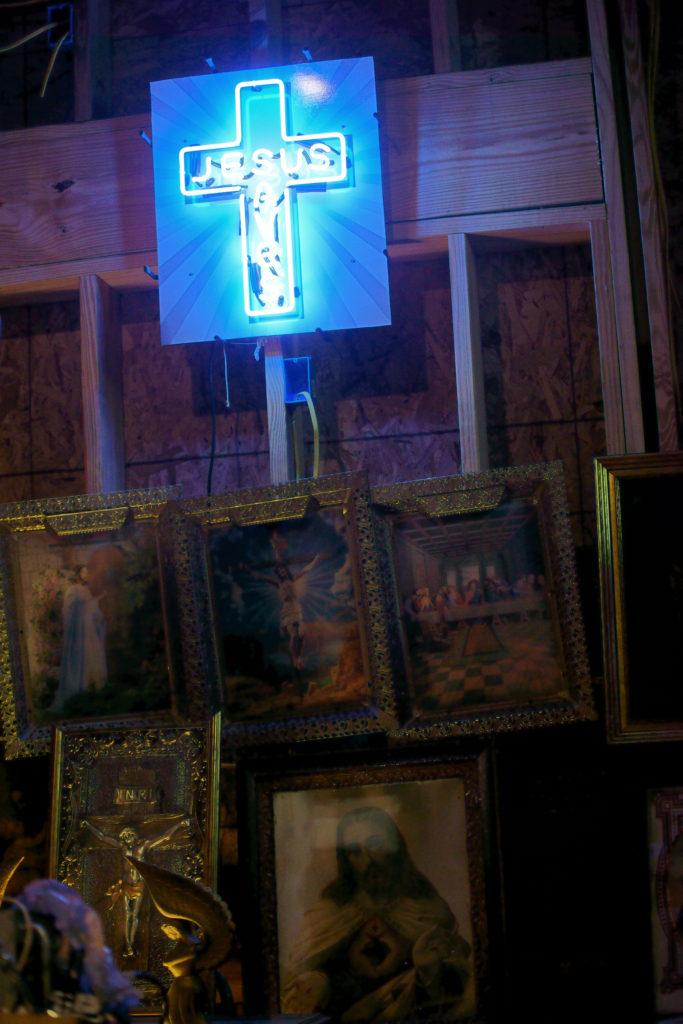
He went on to explain ‘Skellville’ to us — a Halloween-horror project to shock people into thinking about their immortal souls with grim reminders of death and warnings against sin. A Dante’s Inferno of the fright industry. Then (waiving the $1 fee) he opened up a door and gave us a tour of his Time Travel Museum. Inside the ‘museum’ was a pile of artifacts — four-hundred-year-old Bibles, sacred heart pictures, a reproduction of the shroud of Turin, old motorcycles, more dinosaurs, and a neon sign that read: “Jesus Saves.”
Then, after we finished the tour and most of us were wandering around the grounds, he sat down and talked with my father for quite some time about the Lord. I could only overhear snippets, but I have often wondered what they talked about. It clearly wasn’t light conversation, but Mr. Piedt spoke my father’s native religious language in a way that I no longer could. Several months later, my mother would be diagnosed with late stage cancer and my father would begin the hardest time of his life, helping his wife of nearly 50 years through treatment, remission, recurrence, and finally hospice care and her death on St. Patrick’s Day of this year.
It was quite an encounter, though it seems like worlds ago.
I hadn’t been back to Piedt and Sons since that July, but a few weeks ago I was headed to Lake Michigan again and decided to take the ten-minute detour required to stop by. At first, I feared the place might have closed down. All the statues were still there. Al Capone was still staring out the window. The Nephilim were in The Alley. But the door to the Time Travel Museum was blocked off (by a statue of Superman) and things were in notably poor repair.
I was relieved when Mr. Piedt came out brushing his hands on his pants, though also looking worse for the wear. I ended up telling him about my mom’s battle with cancer and eventual passing. I’m not sure why. I asked him to pray for my father.
Then he told me he had gotten Legionnaires’ disease and had almost died himself about a year and a half ago from washing his face in one of his bird baths. (“I thought it was all just fresh rainwater, but I guess not!”). At one point, he was told he might not make it through the night. But God had come to him in a vision and told him he had more work for him to do. And there he was.
I wanted to buy something. I didn’t really care what. I inquired about a statue of St. Francis. Hearing it’s price, though, I said maybe I would poke around a little while longer. Finally, I found a much smaller, weather-worn bust of Jesus.
“How much for this?” I asked, holding it up.
“Well,” he said with a wide grin, “I don’t like to sell Jesus. So I’m going to have to just give you that one.”
I gave him a $20 donation anyway. “It’ll go straight into the mission fund on Sunday,” he said. “When I get up to Heaven, I want to know I’ve made a little deposit.” And he turned to go.
Flannery O’Connor’s short story “Revelation” features as its main character a questionably middle-class hog farmer named Ruby Turpin. In the course of the story, her smooth-as-butter religious outlook has been shaken by an incident in the waiting room of a doctor’s office, during which an ugly, ill-tempered girl throws a book at her seemingly out of nowhere and calls her a “warthog from hell.” Ruby receives the encounter as some indecipherable message from God, no matter how strange. And finally, in a Job-like moment of confrontation with the Almighty, Ruby roars, “Who do you think you are?”
Then she receives a vision, her ‘revelation.’
Everything around her burns with “transparent intensity.” Her question echoes back to her “like an answer from beyond the wood.” And looking skyward at sunset she sees a “vast swinging bridge extending upward from the earth through a field of living fire.” On that bridge a “horde of souls were rumbling toward heaven” — despised companies of white-trash, blacks in white robes, and “battalions of freaks and lunatics shouting and clapping and leaping like frogs.”
And she understands her own place in the order of things:
Bringing up the end of the procession was a tribe of people whom she recognized at once as those who, like herself and Claud, had always had a little of everything and the God-given wit to use it right. She leaned forward to observe them closer. They were marching behind the others with great dignity, accountable as they had always been for good order and common sense and respectable behavior. They alone were on key. Yet she could see by their shocked and altered faces that even their virtues were being burned away.
I edit a journal on education and human awakening. I oversee a network of classical Christian schools. Our students read Augustine, Athanasius, Dostoyevsky, and, yes, Flannery O’Connor. They are very well educated. These days I most often pray out of the Book of Common Prayer. Very respectable. Very much on key.
These are good things, and someone has to do them.
But in the face of an encounter with someone like Brad Piedt, I do occasionally hear the words of the apostle Paul to the Corinthians, echoing back to me “like an answer from beyond the wood.”
God chose what is foolish in the world to shame the wise; God chose what is weak in the world to shame the strong; God chose what is low and despised in the world, even things that are not, to bring to nothing things that are, so that no human being might boast in the presence of God.
At moments like that, it’s good to know that he’s still just up the road in Benton Harbor, making his statues, waiting for All Hallow’s Eve, and giving Jesus away for free.
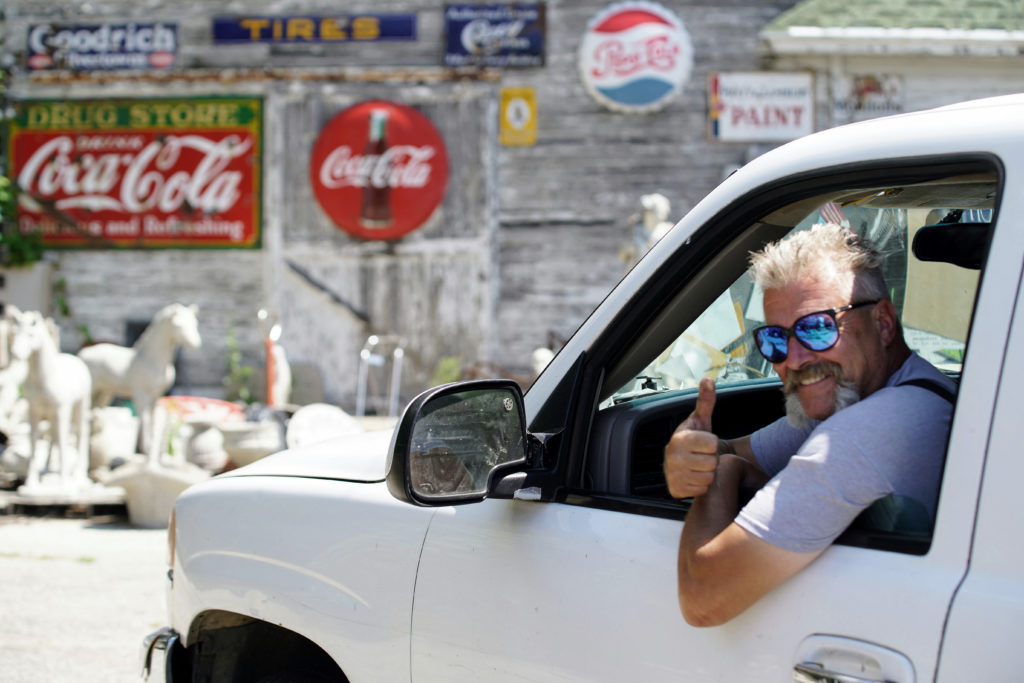
Click On Any Photo to View a Slideshow of More Images
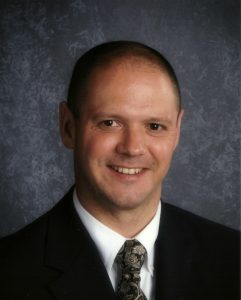
Jon Balsbaugh is a teacher, editor-in-chief of Veritas Journal, and president of Trinity Schools. Though his heart remains trapped in the trout streams, blackberry brambles and old growth forests of the Oregon of his youth, he lives a pleasant life with his wife and family in South Bend, Indiana. He enjoys film, photography and fly-fishing. More of his photography can be found at www.kairosphotos.net.
All Images are copyright of the author
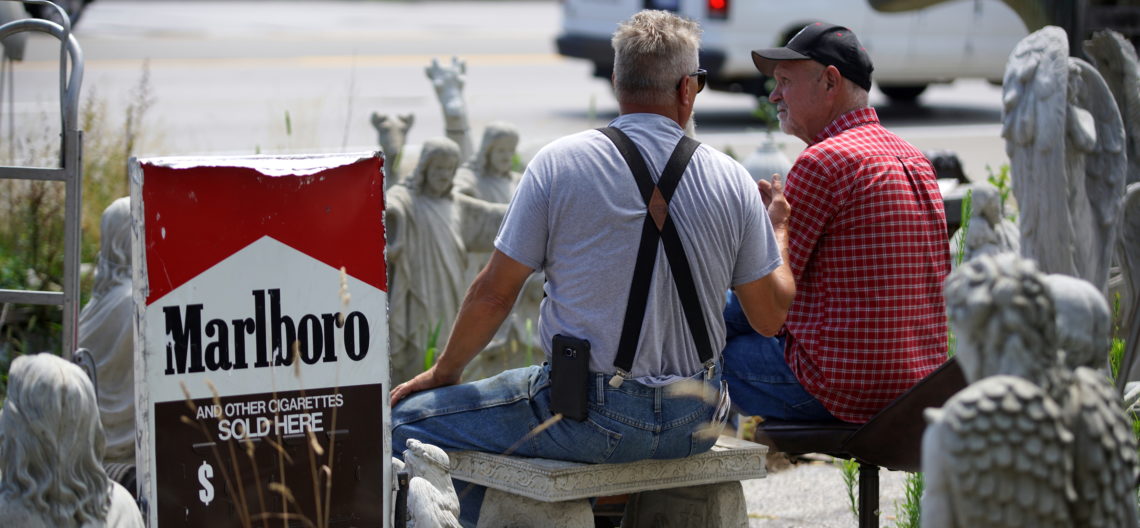


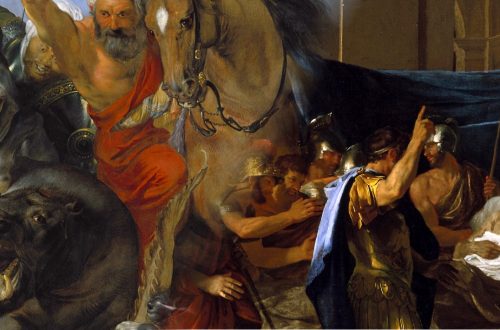
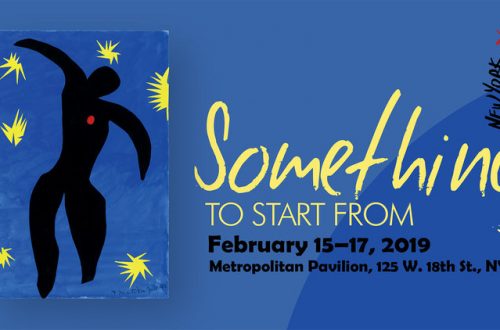
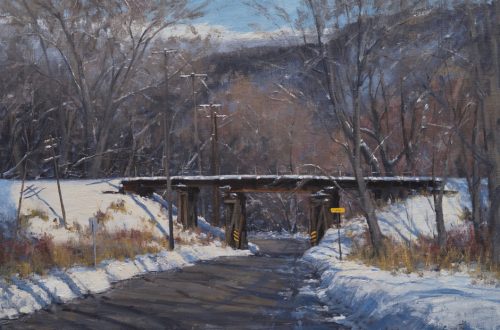
2 Comments
Tom King
Loved the close: “…giving Jesus away for free.”
I’d like to add a closer of my own choosing from Pére de Chardin” “Everything that rises must converge.” Uplifting story, Jon.
Thanks, Tom
Jon Balsbaugh
Of course I’m familiar with the O’Connor story, but had no idea that the title was a quote from Chardin! Worth printing in fully here. “Remain true to yourself, but move ever upward toward greater consciousness and greater love! At the summit you will find yourselves united with all those who, from every direction, have made the same ascent. For everything that rises must converge.”